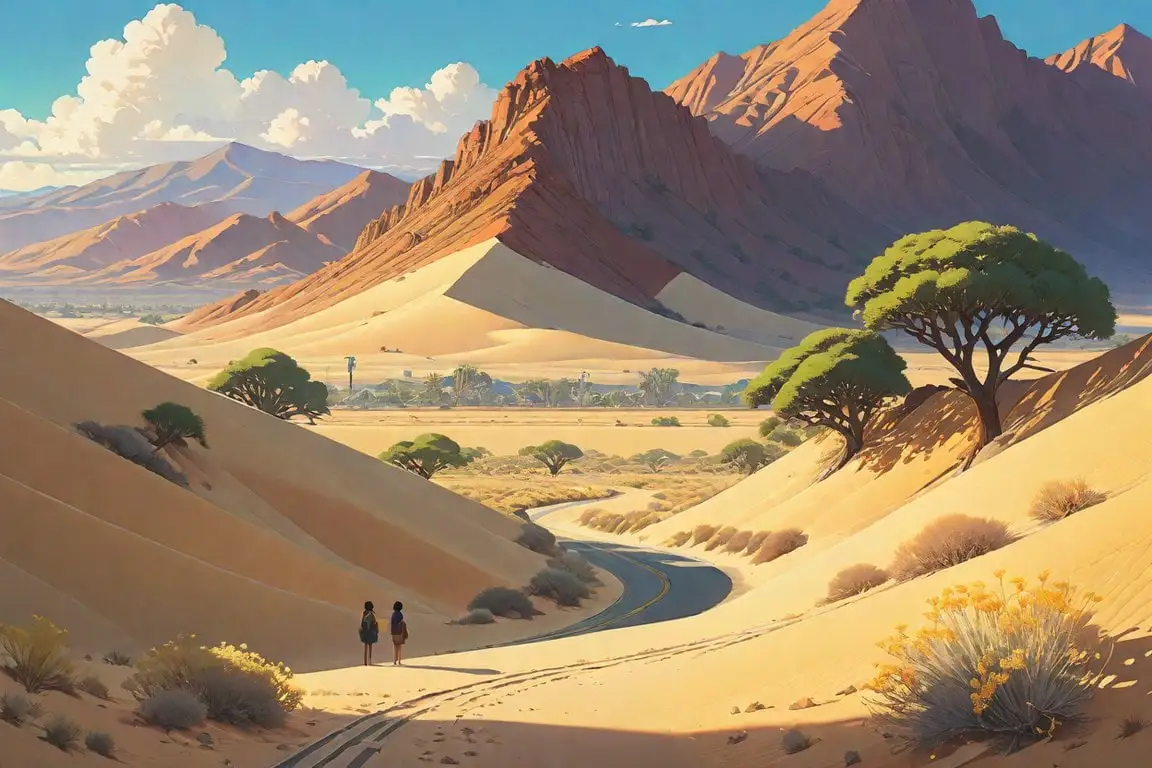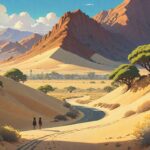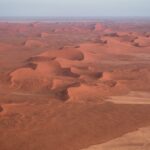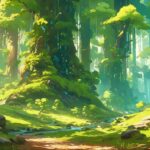Get ready for an epic road trip through the California desert! Covering over two-fifths of the state, this vast and awe-inspiring wilderness is packed with hidden treasures, from towering sand dunes to ancient rock formations. Dive into the unique ecosystems of the Mojave, Colorado, and Great Basin deserts, each with its own fascinating geology and culture. From the surreal Joshua Tree forests to the sizzling sands of Death Valley, the California desert promises an unforgettable adventure that’ll leave you in awe of nature’s wonders.
California Desert Region Facts
When you think of California, sunny beaches and bustling cities probably come to mind. But did you know that almost half of California is actually desert? This isn’t just a small patch of sand either – we’re talking about a massive area stretching over 200 miles long and 100 miles wide.
A Land of Extremes
This vast desert region is a land of extremes. The climate is incredibly dry, with very little rain throughout the year. This lack of rainfall means the temperatures can swing wildly. Imagine scorching summer days where the thermometer hits a sizzling 120°F, followed by surprisingly chilly nights. It’s a harsh environment that only the toughest creatures can call home.
Three Deserts in One
Within this massive desert region, you’ll find three distinct deserts, each with its own unique personality:
- The Great Basin: Known for its high elevation and cold winters.
- The Mojave Desert: Famous for those quirky Joshua trees and scorching heat.
- The Colorado Desert: Stretching towards the mighty Colorado River.
A Surprisingly Diverse Ecosystem
Despite the extreme conditions, the California desert teems with life. You’ll find a surprising variety of plants that have adapted to thrive in this arid environment. From the iconic Joshua tree to resilient cacti and colorful wildflowers that burst into bloom after rare rainstorms, the plant life is surprisingly diverse.
Keep an eye out for the desert tortoise, slowly making its way across the landscape. You might also spot lizards darting between rocks or hear the howl of a coyote echoing through the canyons.
Ancient History and Geological Wonders
The California desert is a land shaped by time. Over millions of years, wind and water have carved the landscape into breathtaking geological formations. One of the most famous spots is Death Valley, known for its otherworldly beauty and the fact that it’s the lowest point in all of North America.
The desert also holds secrets of ancient cultures. Native Americans have lived in this challenging environment for centuries, leaving behind intriguing rock art and artifacts that offer glimpses into their lives and beliefs.
Challenges and Opportunities
The California desert faces an uncertain future. Climate change is bringing new challenges, with rising temperatures and increasingly scarce water resources putting a strain on this delicate ecosystem.
Despite these challenges, the desert remains a haven for outdoor enthusiasts. Imagine hiking through colorful canyons, camping under a star-studded sky, or embarking on a desert safari to catch a glimpse of the local wildlife.
The California desert might seem desolate at first glance, but it’s a place of stark beauty and surprising life. It’s a reminder that even in the harshest environments, nature finds a way to thrive. And who knows what other secrets and wonders are still waiting to be discovered in this vast and enigmatic landscape?
What Makes the California Desert So Unique?
We’ve already talked about how extreme the California desert can be, swinging from scorching summers to surprisingly chilly winters. But here’s the thing: this challenging environment is actually what makes it so fascinating! It’s like nature’s obstacle course, and the plants and animals that call it home have come up with some pretty ingenious ways to not just survive, but thrive.
Desert Plants: Masters of Water Conservation
Let’s talk about the plants first. They might not look as flashy as a redwood forest, but these plants are the real superheroes of the desert. They’ve evolved over time to become masters of water conservation, using some pretty impressive strategies:
- Cacti: These plants have thick, fleshy stems and leaves that act like giant water bottles, storing precious moisture for those long, dry spells.
- Drought-Tolerant Species: Some plants have learned to make do with less, shedding their leaves during droughts to reduce water loss through transpiration.
- Deep-Rooted Plants: Other plants have root systems that spread out wide and deep, maximizing their chances of catching every drop of rain that falls.
Desert Animals: Beat-the-Heat Specialists
Now, imagine yourself out in the desert sun in the middle of summer. Tough, right? Well, the animals that live there have evolved some pretty amazing ways to beat the heat:
- Water Retention: Some animals, like the desert tortoise, are experts at water retention, able to survive for months without a single sip.
- Metabolic Water: Other animals, like the kangaroo rat, get their moisture from the seeds they eat.
- Evaporative Cooling: Then there are those who’ve mastered the art of evaporative cooling, like the black-tailed jackrabbit, whose large ears act like radiators, dissipating heat into the air.
- Burrowing: And let’s not forget about the burrowers, like the desert tortoise and the kit fox, who escape the scorching sun by digging underground where it’s much cooler.
More Than Just a Pretty Landscape: A Rich Cultural Tapestry
But the California desert is more than just its impressive plants and animals. It’s a place steeped in history and culture, shaped by:
- Native American Tribes: Indigenous peoples have called this desert home for centuries, their deep connection to the land evident in their traditions, stories, and ways of life. Tribes like the Cahuilla, Mojave, and Chemehuevi, among others, adapted to this challenging environment, developing intricate knowledge of its plants, animals, and hidden resources.
- Explorers: Daring adventurers who ventured into the desert’s depths.
- Settlers: Those who came seeking new beginnings.
Today, it’s a vibrant tapestry of communities, each with its own unique stories, traditions, and perspectives.
Three Deserts, Three Distinct Personalities
Did you know that “California Desert” is actually a bit of a misnomer? It’s actually made up of three distinct desert regions: the Mojave, the Colorado, and the Great Basin. Each one has its own unique personality, shaped by its geology, elevation, and climate:
- The Mojave: Home to the iconic Joshua Tree National Park, the Mojave is known for its dramatic rock formations and surprising bursts of wildflowers in the spring.
- The Colorado Desert: With its iconic sand dunes, the Colorado Desert is a testament to the power of wind and erosion.
- The Great Basin: A high-elevation desert known for its stark beauty and unique plant life.
The California Desert: A Fragile Ecosystem Worth Protecting
The California desert might seem harsh and unforgiving, but it’s actually a delicately balanced ecosystem. Every plant and animal plays a vital role, and even small changes can have a ripple effect throughout the entire system. That’s why it’s so important to protect this incredible place, not just for the plants and animals that call it home, but for future generations to experience and learn from.
Exploring the Three Major Deserts of California: Mojave, Colorado, and Great Basin
We’ve already chatted a bit about California’s deserts, but now let’s dive deeper into what makes each of these arid landscapes unique. You might be surprised to learn that a whopping 38% of California is covered in desert! That’s a whole lot of sand and sunshine. Now, let’s get to know the Great Basin, Mojave, and Colorado Deserts a little better.
The Great Basin Desert: Where Winter Bites Back
Don’t let the word “desert” fool you, the Great Basin, perched high above sea level, experiences some seriously chilly winters. Unlike the other two deserts, you might even need a warm coat here when the temperature drops. During the summer, though, it’s a different story – scorching hot and dry as can be. The landscape is dotted with hardy plants like sagebrush, thriving despite the harsh conditions, and vast stretches of shimmering salt flats. Keep an eye out for some of the desert’s resilient residents like the speedy pronghorn antelope and the cleverly camouflaged kit fox.
The Mojave Desert: Home of the Iconic Joshua Tree and Sizzling Temperatures
The Mojave Desert is the king of California deserts – the largest and the hottest of the bunch. You’ll instantly recognize this desert by its iconic Joshua trees, their spiky silhouettes reaching for the sky. But be warned, the Mojave doesn’t mess around when it comes to heat. Temperatures here can climb to a staggering 120 degrees Fahrenheit in the summer. That’s hot enough to bake cookies on your dashboard! Besides the iconic Joshua trees, you’ll find a fascinating array of cacti and succulents, all perfectly adapted to survive in this arid environment. Keep your eyes peeled for desert dwellers like the cunning coyote and the quick-footed jackrabbit.
The Colorado Desert: Where Sand Dunes Dance and Dry Washes Whisper
Journey to the southeastern corner of California, and you’ll stumble upon the Colorado Desert. This desert is a world of shifting sand dunes sculpted by the wind and dry washes that hint at long-gone rivers. Despite the harsh conditions, life finds a way. The resilient creosote bush paints the landscape with its distinctive aroma, while the desert tortoise lumbers along in search of shade. Keep a lookout for the California kingsnake, a master of disguise, as it navigates this seemingly barren world.
While scientists have learned a lot about these deserts, there’s still much to discover about their ecosystems, the creatures that inhabit them, and how they’re being impacted by a changing climate. One thing’s for sure, California’s deserts are places of immense beauty, resilience, and wonder.
A Journey Through Time: Unveiling the Cultural History of the California Desert
Imagine yourself walking through the California Desert. The sun beats down, but the air is dry and crisp. You might spot a lizard darting between rocks, or maybe even a hawk circling overhead. This place has a certain magic to it, a feeling of ancient stories whispered on the wind.
We’re not just talking about pretty scenery, though. This land holds the echoes of countless lives lived, struggles faced, and cultures born. Scattered throughout the desert, you can find faded rock art and petroglyphs, like messages from people who lived here centuries ago. These weren’t just doodles; they were ways of recording history, sharing beliefs, and maybe even just expressing themselves, much like we do today.
Then there are the ghost towns, remnants of boom and bust cycles – places that once buzzed with gold rush fever or mining aspirations. Now, they stand as silent reminders of how quickly fortunes could be made and lost in this unforgiving landscape. But even in those deserted buildings, you can almost hear the echoes of the past, imagining the hopes and dreams of the folks who once called these places home.
And we can’t forget the indigenous people, who have called this desert home for millennia. Their deep connection to the land is evident in their traditions, stories, and ways of life. Tribes like the Cahuilla, Mojave, and Chemehuevi, among others, adapted to this challenging environment, developing intricate knowledge of its plants, animals, and hidden resources. Learning about their history isn’t just about the past; it gives us a glimpse into a way of life that’s deeply intertwined with nature, something we could all probably learn a thing or two from.
Venturing deeper into the different deserts within the California Desert reveals even more variety. The Mojave, with its iconic, almost otherworldly Joshua trees, suggests a land of resilience and strange beauty. The Sonoran Desert, on the other hand, boasts those majestic saguaro cacti, standing like sentinels over the landscape. And then there’s the vastness of the Great Basin Desert, a place of stark beauty where sagebrush and salt flats stretch out as far as the eye can see.
Exploring the cultural history of the California Desert isn’t just about ticking off historical sites. It’s about connecting with something bigger than ourselves, recognizing the threads of human experience woven into the very fabric of this land. It’s a journey of discovery, reminding us that even in the most seemingly desolate places, life, history, and stories persist.
Want to visit the numerous deserts in Africa? Many creatures, including desert bugs, call these fascinating landscapes home. Learn more about the water in the desert and the non-living things in the desert. Discover the abiotic animals in the desert and explore the unique desert flora. Understand the abiotic components of desert and their impact on this extraordinary ecosystem. Click on the links to delve deeper into the mysteries of the desert.
- Unveiling Bernhard Caesar Einstein’s Scientific Achievements: A Legacy in Engineering - July 15, 2025
- Uncover who is Jerry McSorley: CEO, Family Man, Business Success Story - July 15, 2025
- Discover Bernhard Caesar Einstein’s Scientific Contributions: Unveiling a Legacy Beyond Einstein - July 15, 2025















